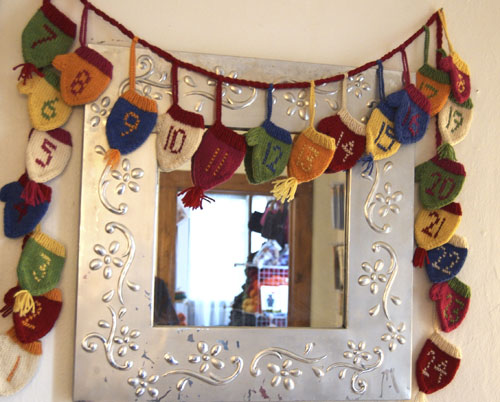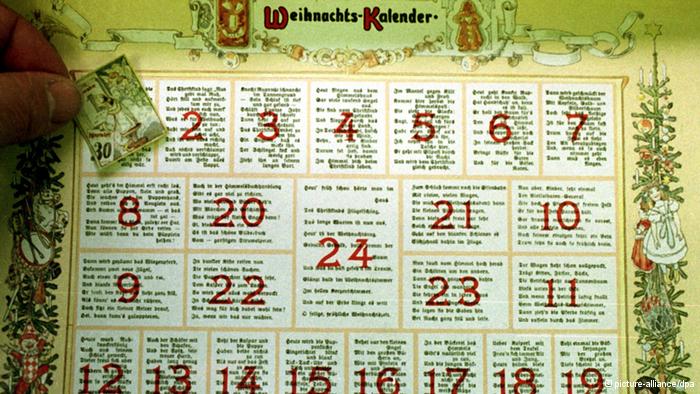The Adventskalender
Every year I write an article about traditions surrounding Christmastime. This year I thought I’d cover one that I try to maintain on my own, because it makes me happy. I’m talking about the Adventskalender.

For those of you who don’t know what an Advent Calendar is, let me describe one. Originally intended for children, many adults (as I) still enjoy this wonderful little creation. It can be simple or fancy, but basically boils down to a piece of artwork with 25 windows, number 1-25 on it. Behind each window there is usually some kind of treat – candy or a small toy are the most popular ones, though some have had stickers, or puzzle pieces, or little messages. The artwork is usually Christmas or winter-themed, and the child is supposed to open the windows one day at a time, starting on December 1st. An Adventskalender can be made from paper, wood, or something more hardy, and some have even been made by glue the “windows” to decorative string and making a kind of mobile that can then be hung from the ceiling or even the Christmas Tree itself. I used to have a wooden one myself, until everything was lost in the forest fire a couple years ago. Now I’m making do with the paper ones until I can manage better.
 
So when and where did this tradition start?
As can be implied by the fact that I use the German word for it more often than the English, the tradition first started in Germany, in 1851. At first, it was much more humble, with merely chalk drawing on the wall that the children would cross off each day as Christmas approached, or as pieces of straw that they’d put into a manger each day. It’s also taken on the form of a clock, or a candle burned each day in a manner similar to the Jewish Menorah. Up until the 20th century, they were all very personal, intimate, and hand-made.
In 1902 the first commercial Advenstkalendar was printed in Hamburg by an envangelical bookstore. This, and many other Advents Calendars that followed were simple sheets with the days on them which the child either crossed off or upon which the child could place a sticker or stamp. It wasn’t until the 20s that commercial calendars with openable windows appeared. From there, it really took off, and now you can find them in numerous varieties.

In Germany, some cities even turn entire buildings into an Adventskalender for the whole town!
 
So, we know the what of it, but why were they started in the first place? Well, speculation has it that the Adventskalender was started to help children handle the delay of gift giving from the original date of December 6th, St Nikolaus Tag, to December 25th, a move that was made by protestant churches as a way to separate themselves from the Catholic Church after the Reformation as well as eliminate Saint Worship. This argument definitely holds some merit, even though the calendars didn’t appear for over 200 years after the Reformation, and many German families still practice gift giving on St Nikolaus Tag. Regardless, it is a delightful tradition, and millions of children and adults throughout the world enjoy this Germanic Christmas Tradition. I know I do!
|



